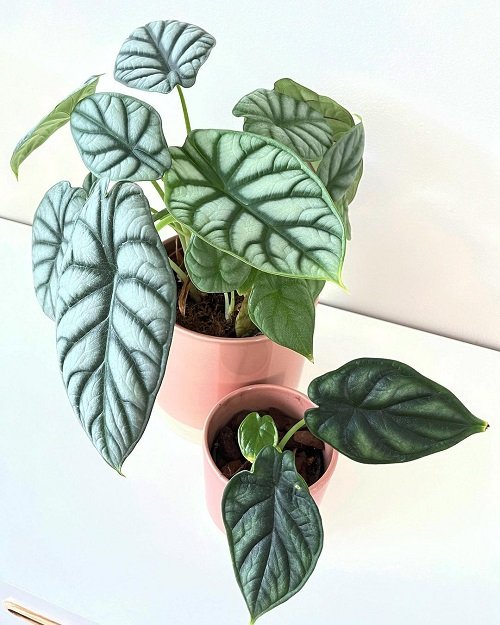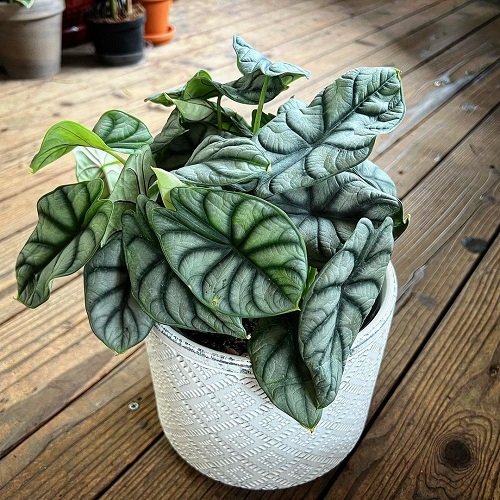
herberyboutique
Alocasia Silver Dragon has to be one of the most stunning compact indoor plants you can grow. Here are all the details to maintain it easily.
Check out 26 Different Alocasias in Water here
Alocasia Silver Dragon Information
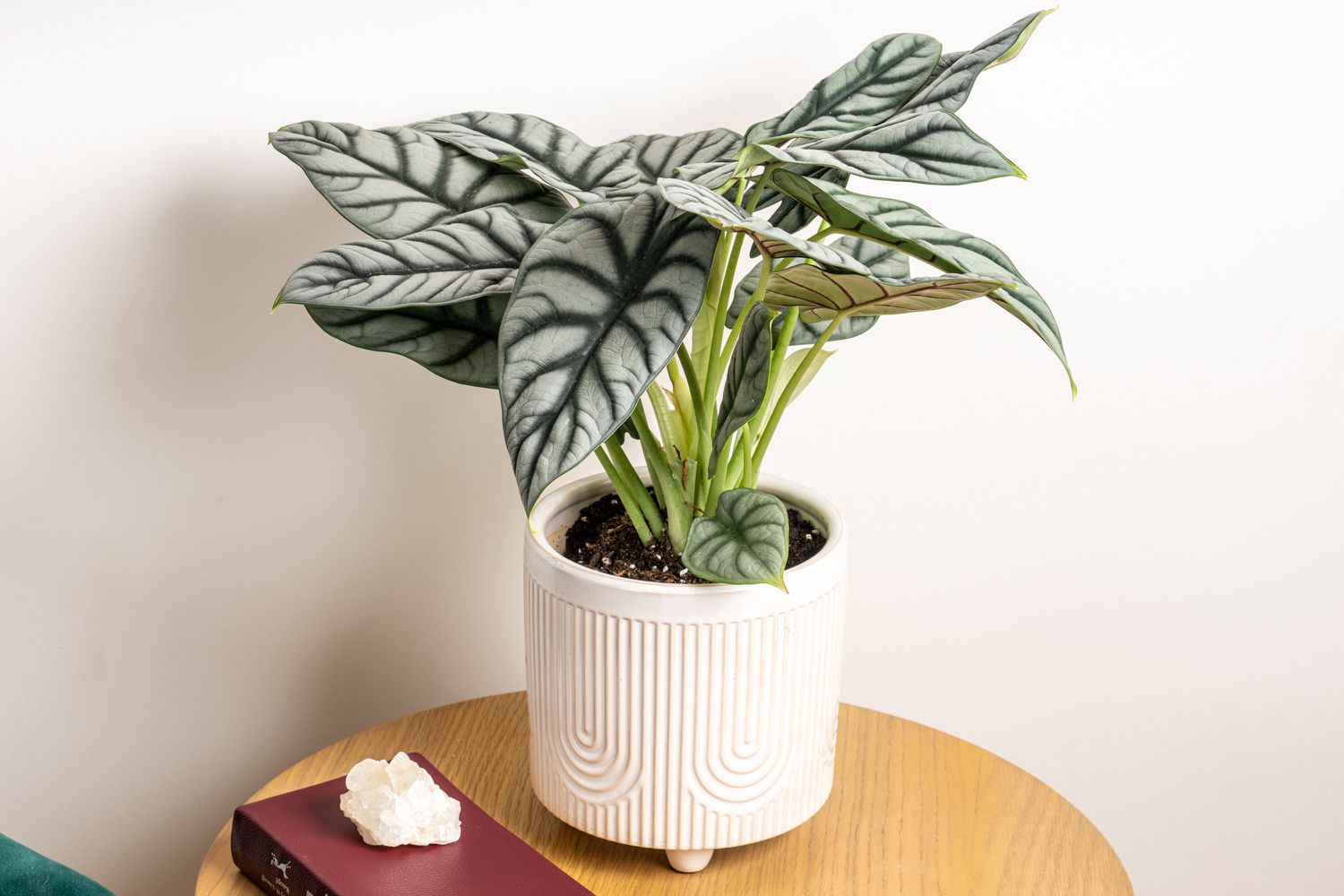
The Alocasia Silver Dragon (Alocasia baginda ‘Silver Dragon’) is known for its stunning heart-shaped foliage, which is thick and has a light silver-green color. What sets it apart is the highly textured dark green venation that runs through the leaves.
Despite its compact size, it can make a big impact in a small space, making it an ideal choice for indoor gardens. This plant thrives in humid environments, so it would be a great addition to a bathroom.
However, it’s important to note that the Alocasia Silver Dragon requires some dedicated care. It is not a low-maintenance houseplant, so if you are new to indoor gardening, you might want to start with a more readily-available and affordable variety, such as the Alocasia Polly, which can often be found at stores like IKEA.
Since the Alocasia Silver Dragon is relatively rare and exotic, it can be quite expensive, and you wouldn’t want it to wither away within a week after investing a significant amount of money.
Additionally, like other Alocasia species, the Alocasia Silver Dragon is toxic to both humans and pets. If you have curious cats or dogs at home, it’s best to keep them away from this plant to ensure their safety.
Check Alocasia Dragon Tooth Care and Growing Guide here
Propagating Alocasia Silver Dragon
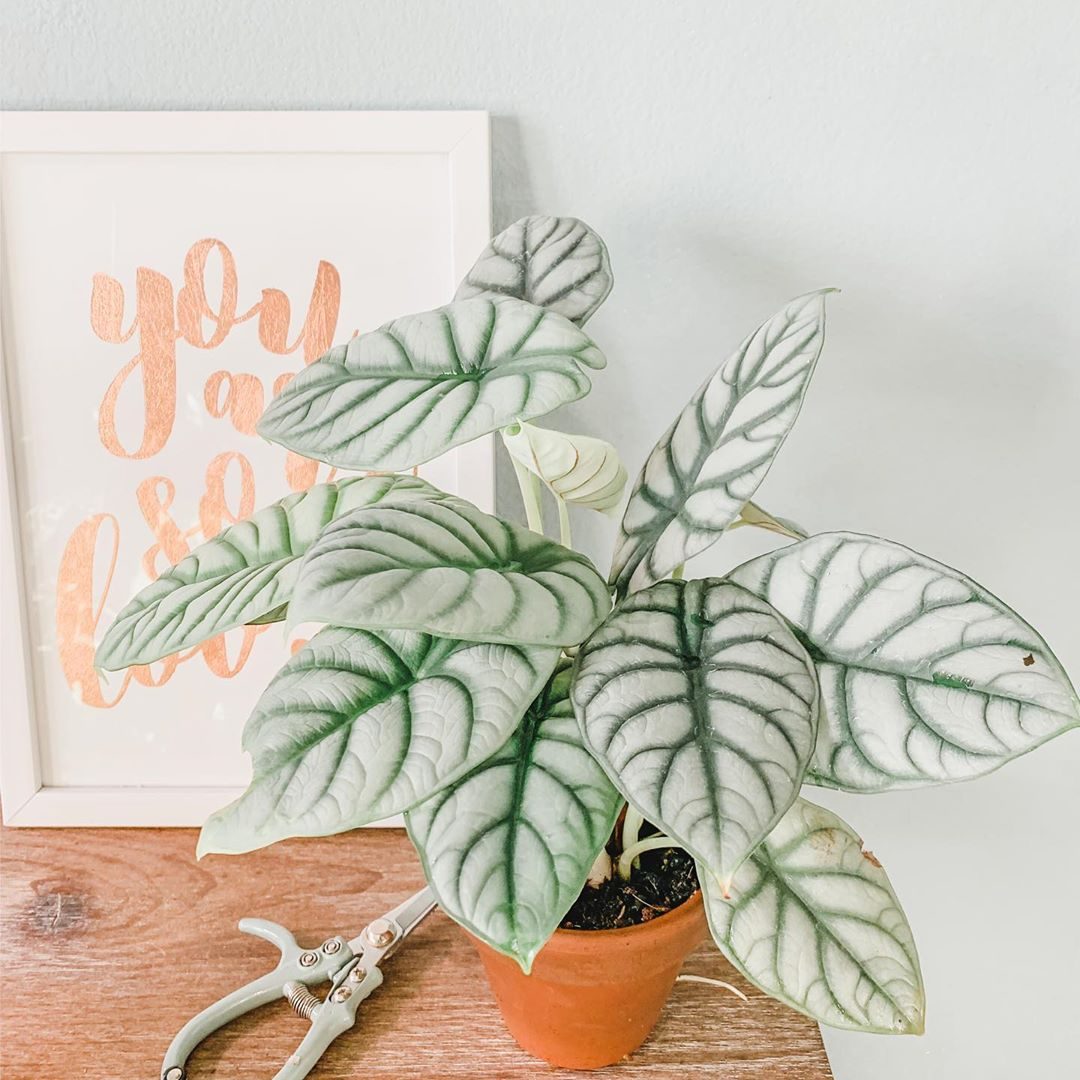
Propagating Alocasia Silver Dragon plants is not as straightforward as taking a stem cutting. However, it can still be achieved through rhizome division or clump division on mature plants:
Rhizome Division:
- Wait until your mature and healthy plant has come out of dormancy in the spring before attempting propagation.
- Always use gloves when handling Alocasia Silver Dragon, as it contains calcium oxalate crystals that can irritate the skin.
- Carefully remove the plant from its pot and gently shake off the soil to expose the rhizomes. Rhizomes are thick, horizontal stems that grow underground and produce new shoots and roots.
- Using a sharp and sterile knife, cut off healthy rhizomes from the plant’s central stem. Make sure to include some roots and shoots with each rhizome cutting to increase its chances of successful growth.
- Pot the rhizome cuttings near the surface of a moist, well-drained potting mix. Avoid saturating the soil, as excessive moisture can lead to rot.
- Place them in a warm and humid spot. You can create a humid environment by covering the pot with a clear plastic bag or using a propagation tray with a dome.
- Monitor the cuttings regularly and ensure that the soil remains slightly moist but not overly wet. Avoid overwatering, as it can lead to root rot.
- If successful, new growth should start to appear a few weeks after the roots have taken hold.
Propagation through Corms
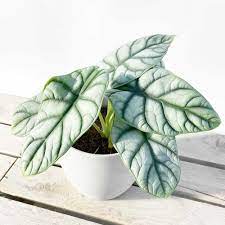
- Carefully remove Alocasia Silver Dragon from its pot and locate the corms. These are short; swollen underground plant stems that resemble bulbs and are found around the plant’s roots.
- Take care not to damage any roots while removing the corms from the soil.
- Gently peel off the brown outer layer of the corms, exposing the inner flesh.
- Use sphagnum moss (not regular potting soil) to create the ideal moisture levels for the corms. Place the corms on a bed of moist sphagnum moss.
- Ensure that you don’t cover the top of the corms with moss, as they should remain exposed.
- Cover the container with a plastic bag or humidity dome to retain moisture. This creates a humid microenvironment for the corms.
- Place the container in a warm location with bright, indirect light. A temperature range of 70-80°F (21-27°C) is generally suitable for Alocasia propagation.
- Over the course of one to four months, the corms should develop well-established roots.
Check out Alocasia Frydek Care and Growing Guide here
Requirements for Growing Alocasia Silver Dragon
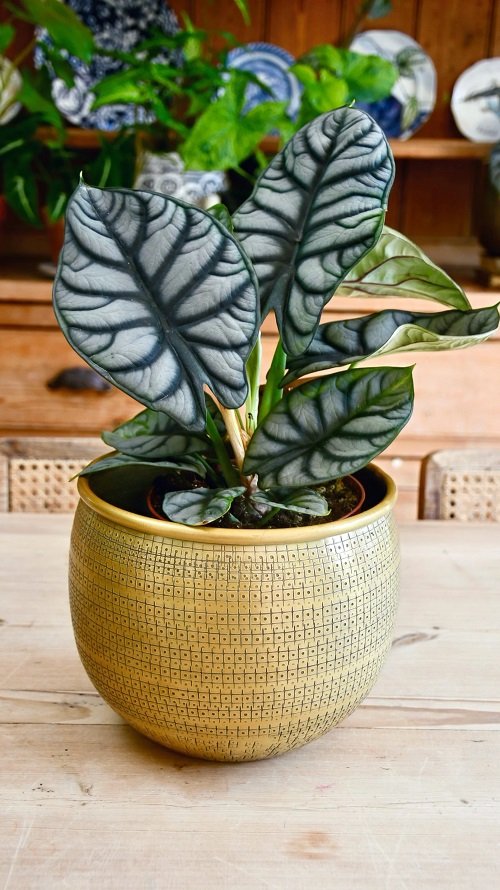
Location
In their native rainforests, these plants enjoy dappled light on the jungle floor. In your home, expose the plant to bright, indirect light.
Too much exposure to direct sunlight can scorch the leaves, but too much shade results in straggly, leggy growth. Rotating your plant frequently helps to encourage even foliage growth.
Soil
To prevent root rot, use a well-draining soilless potting mix for your Alocasia Silver Dragon. Try equal parts coco coir, perlite or pumice, and orchard bark.
Alternatively, you can use a lightweight and porous potting mix that works well for any houseplant.
Water
To maintain optimal moisture levels, allow the top couple of inches of soil to dry before watering your Alocasia Silver Dragon. In any case, make sure to never water the plant on a daily basis.
Temperature and Humidity
The plant prefers warm temperatures and does best in a range of 65°F to 95°F (18°C to 34°C). It is important to avoid exposing the plant to temperatures below 60°F (15°C), as it can be sensitive to cold and may suffer damage or even die.
Creating a humid environment for your Silver Dragon can be achieved by housing them in large terrariums, using a humidifier, or placing their pot on a pebble tray filled with water.
Check out Alocasia Corazon Care and Growing Guide
Alocasia Silver Dragon Care
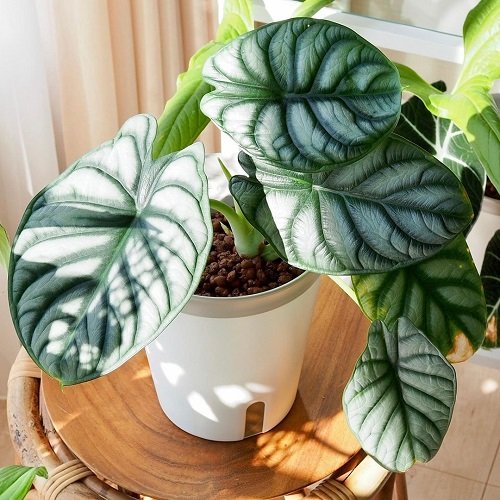
shokubutsuzoku
Fertilizer
Alocasia Silver Dragon can benefit from a balanced, water-soluble fertilizer, such as a 10-10-10 or 20-20-20 formulation. Start with a half-strength or quarter-strength solution and use it once in 3-4 weeks, during spring and summer.
Reduce or stop fertilization during the fall and winter when the plant enters a period of dormancy or slower growth.
Pruning
Pruning the Alocasia Silver Dragon is relatively low-maintenance. Simply remove any dead or unhealthy leaves as needed. You can also trim off insignificant spathe-like flowers to redirect energy towards the striking foliage, enhancing its visual appeal.
Pests and Diseases
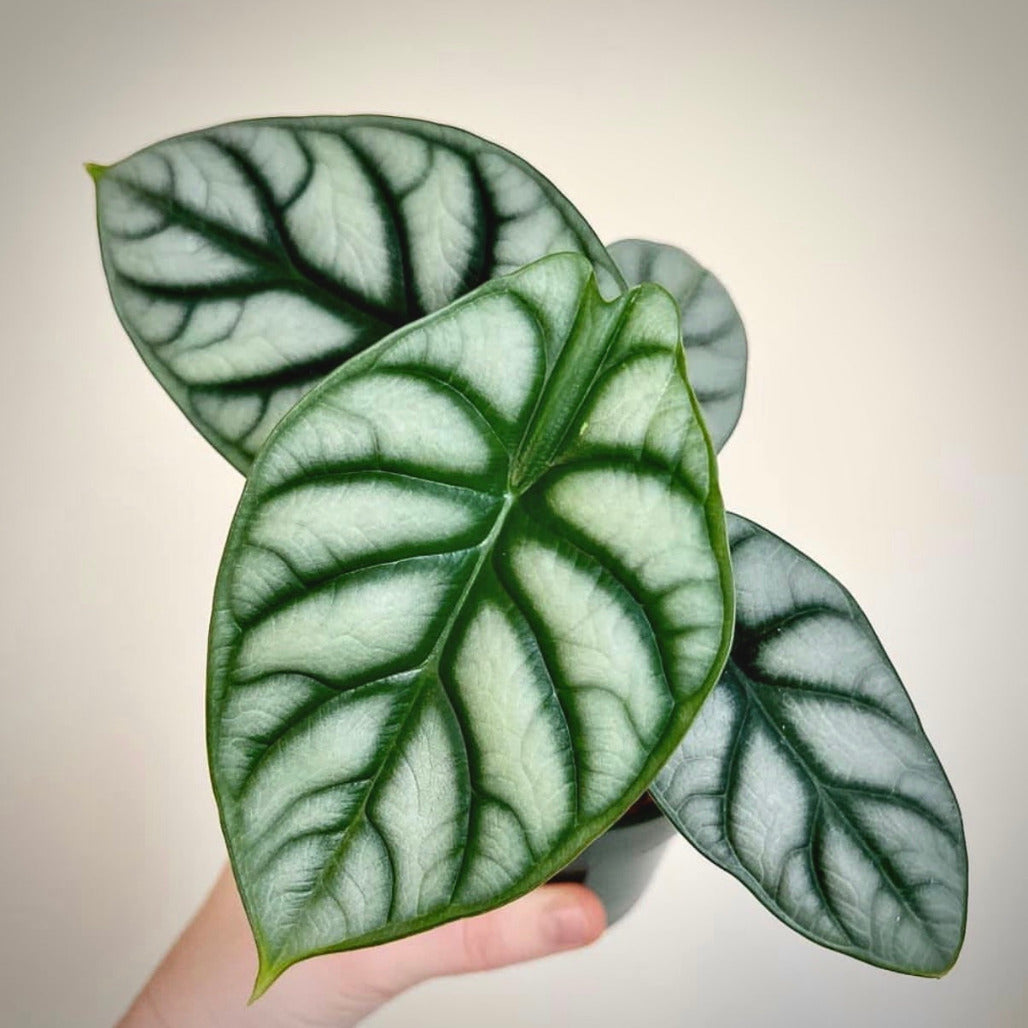
While Alocasia plants are generally resistant to diseases, pests that thrive in high humidity can be a challenge. Spider mite infestations are common among these plants.
Regularly inspecting your Alocasia allows you to detect any early signs of pests and take prompt action by applying insecticides to prevent the issue from becoming more severe.
